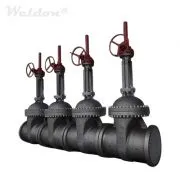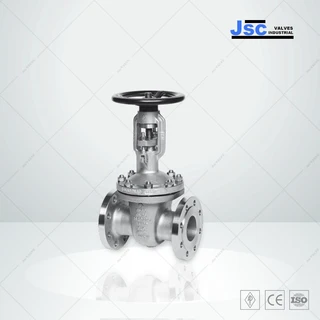Cast Iron Valves vs. Cast Steel Valves: Major Differences
In the industrial field, valves are indispensable key components. They act like the gatekeepers of pipeline systems, accurately controlling the flow of fluids. Among the many valve materials, cast iron and cast steel are the two most common choices. Today, let us take a closer look at the differences between cast iron valves and cast steel valves, to help you make a more informed choice in practical applications.
Cast Iron and Cast Steel: Differences in Chemical Composition
The essential difference between cast iron and cast steel lies in their chemical composition. Cast iron is an iron-carbon alloy with a carbon content of more than 2%, while cast steel has a carbon content of less than 2%. Carbon steel, which we often refer to as plain carbon steel, is an iron-carbon alloy in which carbon is the main alloying element, with the carbon content WC less than 2%. In addition to carbon, carbon steel usually contains small amounts of silicon, manganese, sulfur, and phosphorus. According to different uses, carbon steel can be divided into carbon structural steel, carbon tool steel, and free-cutting structural steel. Among them, carbon structural steel can be further divided into constructional structural steel and mechanical manufacturing structural steel. According to carbon content, carbon steel can be classified as low-carbon steel (WC≤0.25%), medium-carbon steel (WC 0.25%–0.6%), and high-carbon steel (WC>0.6%). According to the content of phosphorus and sulfur, carbon steel can be divided into ordinary carbon steel (with higher phosphorus and sulfur), high-quality carbon steel (with lower phosphorus and sulfur), and superior-quality steel (with even lower phosphorus and sulfur).
Cast iron has various types, including gray cast iron, white cast iron, malleable cast iron, ductile cast iron, vermicular graphite cast iron, and alloy cast iron. The cast iron valves we commonly refer to usually use ductile cast iron. Ductile cast iron is obtained by spheroidizing gray iron molten metal, in which the precipitated graphite appears in spherical form, hence the name. Compared with ordinary gray cast iron, ductile cast iron has higher strength, better toughness, and plasticity.
Understanding Cast Iron Valves
Cast iron valves, due to their unique performance characteristics, are widely used in many industrial fields. They are not only economical and durable but also have good compressive strength, meeting the requirements of general industrial applications. However, their performance in high-temperature and high-pressure environments is relatively insufficient.
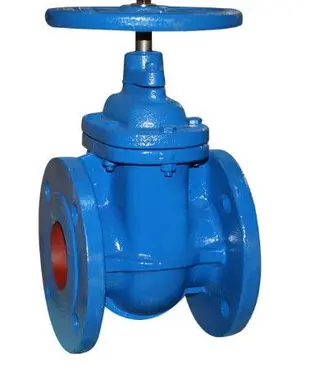
1. Performance Characteristics of Cast Iron Valves
Cast iron valves have excellent compressive strength and are an economical and durable valve option. They are commonly used in low-pressure environments such as water treatment, water supply, and drainage systems, where the pressure and temperature requirements of the valves are not high. The price of cast iron valves is relatively low, but under high-temperature and high-pressure conditions, their performance may not be as good as that of cast steel valves. The advantages of imported cast iron valves lie in their lower cost and relatively simple manufacturing process. They have good compressive strength and can meet the needs of general industrial applications. However, imported cast iron valves also have disadvantages. Under high-pressure and high-temperature environments, their performance may not be as good as that of cast steel valves. In addition, cast iron valves have poor resistance to strongly corrosive and oxidizing fluids and are easily attacked by chemical corrosion.
2. Manufacturing Process of Cast Iron Valves
The manufacturing process of cast iron valves is relatively simple. The main process includes casting, machining, assembly, and inspection. During casting, the molten cast iron is poured into a pre-made mold, and after cooling and solidification, it forms the rough casting of the valve. Then, the rough part is machined into the required shape and dimensions according to the design. Next, the machined components are assembled to form a complete cast iron valve. Finally, the assembled valve is inspected to ensure its quality and performance meet the standards. Because cast iron has good fluidity, it is easy to form complex valve parts during casting. This gives cast iron valves a certain advantage in manufacturing complex-shaped valves. For example, in producing valves with complicated internal structures, the manufacturing process of cast iron valves can better meet design requirements.
3. Application Fields of Cast Iron Valves
Due to their economy and certain compressive strength, cast iron valves are usually used in low-pressure environments. They are widely used in water treatment, water supply, and drainage systems. In these systems, cast iron valves can effectively control water flow and ensure the rational distribution and use of water resources. In addition, cast iron valves are also suitable for industrial applications with low pressure and temperature requirements. For example, in some small factories or workshops, cast iron valves can be used to control the flow of cooling water and provide necessary cooling for production equipment. However, cast iron valves are not suitable for high-temperature and high-pressure environments. In such conditions, cast iron valves may undergo slight deformation due to their rigidity, affecting sealing performance and service life.
4. Maintenance of Cast Iron Valves
The maintenance of cast iron valves is relatively simple. First, regularly check the sealing performance of the valve. If leakage occurs, replace the sealing parts in time. Second, keep the valve clean and protected against corrosion. Regularly remove dust and dirt from the valve surface to prevent corrosion. In humid environments, a layer of anti-rust paint can be applied to enhance corrosion resistance. In addition, regularly check the operating flexibility of the valve. If it becomes difficult to operate, inspect the internal parts to eliminate faults. Since cast iron material is brittle, avoid excessive force during maintenance to prevent damage.
What Are Cast Steel Valves?
Cast steel valves are key equipment widely used in the industrial field, playing an important role in various complex working conditions with excellent performance and reliability. Next, we will explore the performance characteristics, manufacturing process, application fields, and maintenance of cast steel valves.
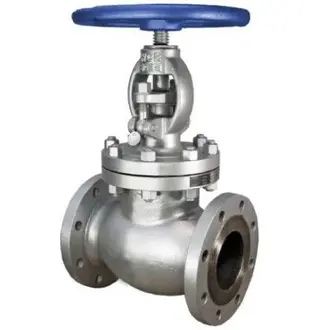
1. Performance Characteristics of Cast Steel Valves
Cast steel valves are popular for their excellent strength, toughness, and wear resistance. They can withstand high pressure and high temperature, making them suitable for industries such as petroleum, chemical, and power. Meanwhile, cast steel also has excellent corrosion and oxidation resistance, suitable for handling corrosive or strongly oxidizing fluids. The advantages of imported cast steel valves are obvious — they can withstand high pressure and temperature and have high structural strength, good wear resistance, corrosion resistance, and oxidation resistance. These features allow them to maintain stable performance under harsh working conditions. However, imported cast steel valves are more expensive than cast iron valves due to their more complex manufacturing process and higher production cost.
2. Manufacturing Process of Cast Steel Valves
The manufacturing process of cast steel valves is relatively complex. The main steps include smelting, casting, heat treatment, machining, assembly, and inspection. During smelting, steel is heated to an appropriate temperature with strict control of its chemical composition. Then, the molten steel is poured into molds for casting. After casting, the valve blank undergoes heat treatment to improve its structure and properties. The heat treatment process includes annealing, normalizing, quenching, and tempering. Through heat treatment, cast steel valves achieve higher strength, toughness, and wear resistance. Next, the heat-treated valves are machined to the required dimensions and shape, assembled, and finally inspected to ensure quality and performance. Because cast steel has higher strength and toughness, the manufacturing process requires more procedures and stricter quality control. This results in higher manufacturing costs but ensures excellent performance.
3. Application Fields of Cast Steel Valves
Due to their excellent performance, cast steel valves are widely used in high-pressure and high-temperature environments. In industries such as petroleum, chemical, and power, cast steel valves are indispensable components. They can withstand high pressure and temperature, ensuring the safe flow of fluids in pipeline systems. For example, in oil extraction and refining, cast steel valves control the transportation and processing of petroleum, preventing leakage and equipment damage. In the chemical industry, they handle various corrosive or oxidizing fluids to ensure smooth production. In the power industry, cast steel valves control the flow of steam and hot water, ensuring normal operation of power generation equipment.
4. Maintenance of Cast Steel Valves
Maintenance of cast steel valves requires more attention. First, regularly check sealing performance, as they are used in high-pressure, high-temperature environments. Replace seals immediately if leakage occurs. Second, keep the valve clean and corrosion-protected. Regularly clean surface dust and dirt to prevent corrosion. In highly corrosive environments, apply protective coatings to improve corrosion resistance. Also, check the valve's operating flexibility regularly and inspect internal parts if operation becomes difficult. Because of their strength and toughness, avoid excessive force during maintenance to prevent damage to sealing surfaces. Additionally, check connections regularly to ensure reliability, which is especially important in high-pressure applications.
How to Choose the Right Valve?
Choosing between cast iron and cast steel valves requires consideration of multiple factors.
1. Fluid Characteristics
First, consider the properties of the fluid, including corrosion, oxidation, and temperature. If the fluid is highly corrosive or oxidizing, cast steel valves are a better choice due to better corrosion and oxidation resistance. For example, when dealing with acidic or alkaline media, cast steel valves can resist corrosion better and extend service life. Cast iron valves may require extra protection to resist corrosion.
2. Environmental Conditions
Next, consider the environmental conditions, including pressure, temperature, and corrosion. If operating in high-pressure, high-temperature, or corrosive environments, cast steel valves are more suitable. For example, in oil pipelines with high pressure, cast steel valves can handle greater loads to ensure safety. In low-pressure and normal-temperature environments, cast iron valves can meet the requirements with cost advantages.
3. Cost Factors
Finally, consider the total cost, including purchase, installation, and maintenance. If the budget is limited and the application allows, cast iron valves are a more economical choice. They are cheaper and easier to process. In contrast, cast steel valves are more expensive due to material and process complexity. However, they usually have longer service life and more stable performance under high pressure and temperature. Although the initial investment is higher, their long-term maintenance cost may be lower than that of cast iron valves.
Comparison Between Cast Steel Valves and Ductile Cast Iron Valves
Next, let us focus on the comparison between cast steel valves and ductile cast iron valves. Both are widely used in the industrial field but have unique characteristics and advantages.
Material Properties: Cast steel valves are made of carbon or alloy steel with high strength and corrosion resistance. Ductile cast iron valves (also called ductile iron ball valves) are made from ductile iron with magnesium alloy added for better toughness and impact resistance.
Strength and Pressure Resistance: Since cast steel valves are made of steel, they have higher strength and pressure resistance, suitable for various industrial uses. Ductile cast iron valves have lower strength, though better toughness, and are not suitable for high-pressure or high-temperature conditions.
Corrosion Resistance: Cast steel valves have better corrosion resistance and can be coated or plated for additional protection. Ductile cast iron valves' corrosion resistance depends on material quality and may require extra measures in extreme conditions.
Applications: Cast steel valves are used in petroleum, chemical, and power industries requiring high pressure and temperature. Ductile cast iron valves are used in general industrial and low-pressure systems such as water supply and air conditioning.
Cost: Ductile cast iron valves are more affordable with lower material and processing costs, while cast steel valves are more expensive due to material and processing complexity.
Conclusion
Cast iron valves and cast steel valves each have their advantages and play important roles in different industrial applications. Cast iron valves are economical, durable, and pressure-resistant, suitable for low-pressure and general-purpose environments. Cast steel valves, with their high strength, toughness, corrosion, and oxidation resistance, are widely used in high-pressure, high-temperature, and corrosive environments. Choosing between them requires comprehensive consideration of fluid properties, operating conditions, and total cost. In practical applications, selecting the most suitable valve material according to specific requirements ensures smooth industrial production and safe equipment operation.
Send your message to this supplier
Related Articles from the Supplier
Full Bore Ball Valves vs. Reduced Bore Ball Valves
- Oct 27, 2025
Globe Valves vs. Diaphragm Valves: How to Choose?
- Sep 09, 2025
Knife Gate Valves: Unidirectional vs. Bidirectional
- Dec 31, 2024
Related Articles from China Manufacturers
The Differences Between Ball Valves and Globe Valves
- May 10, 2019
Ductile Iron Valves VS Cast Iron Valves
- Mar 06, 2019
A brief introduction of a cast iron pipe
- Jul 04, 2018
Related Products Mentioned in the Article
Zhejiang Kosen Valve Co., Ltd.
- https://www.kosenvalve.com/
- Address: Dongou Industrial Zone, Oubei, Wenzhou, Zhejiang, China
- Phone: 86 577 5798 7171
- Business Type: Industry & Trading, Manufacturer,
Supplier Website
Source: https://www.kosenvalve.com/media-hub/cast-iron-valves-vs-cast-steel-valves-major-differences.html

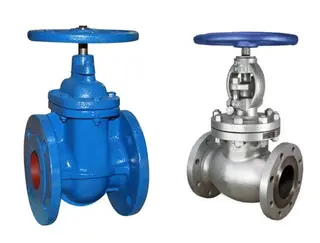

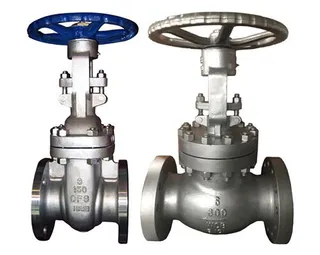

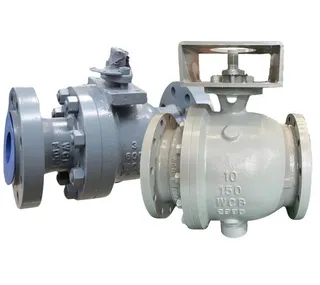
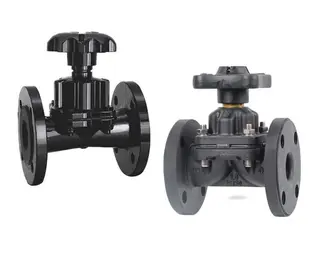

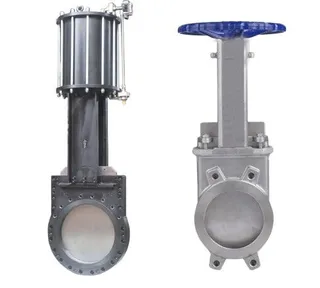
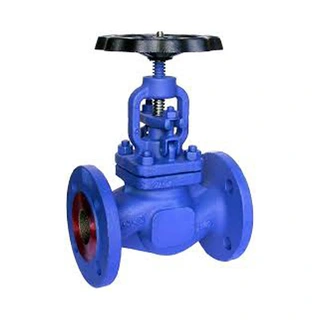
.png)



